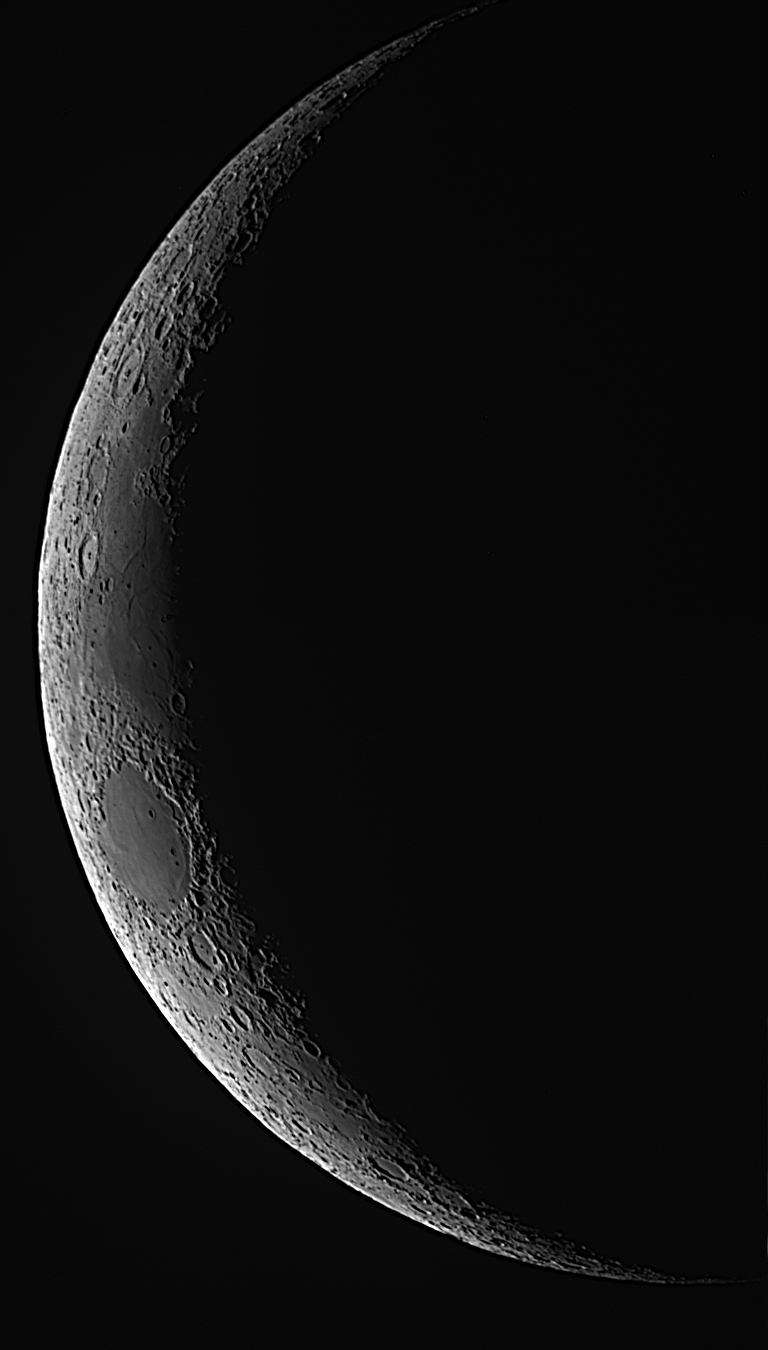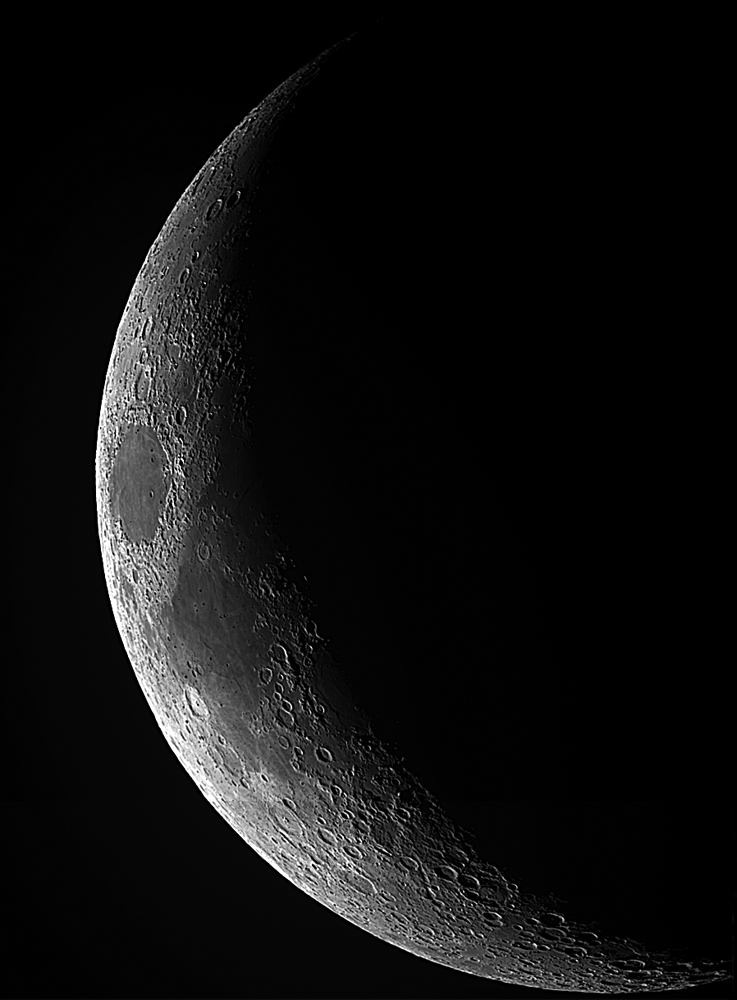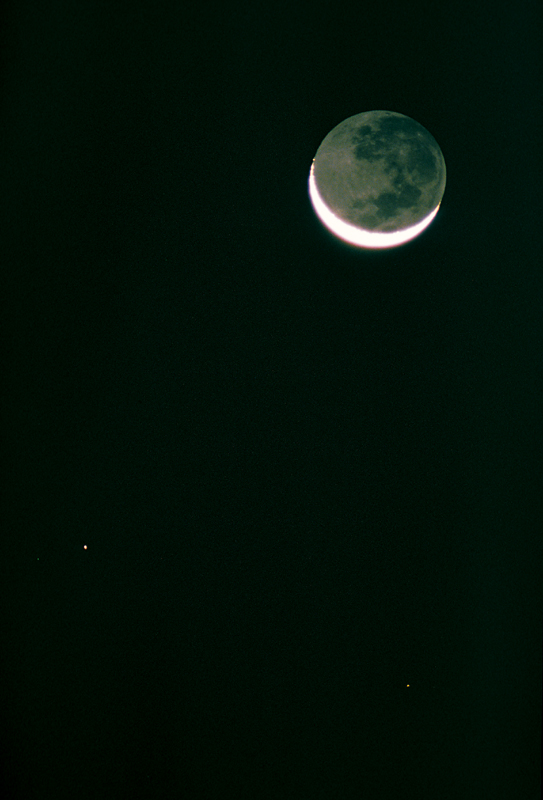
1/15 second image, Fuji Provia 400 slide film.
5" f/5 refractor at prime focus.

In the images above, the two stars belong to Cancer. The Moon was close to M44 at the time, however it was just out of the field.
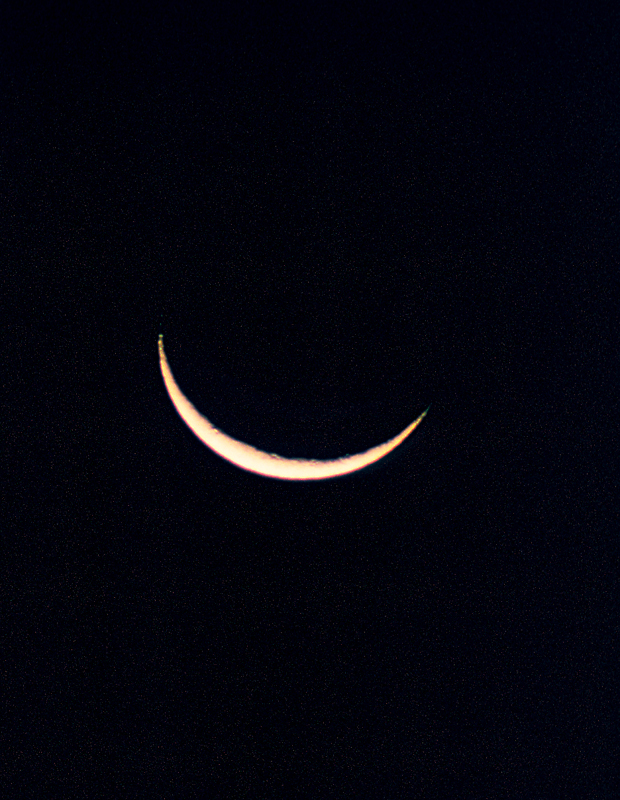
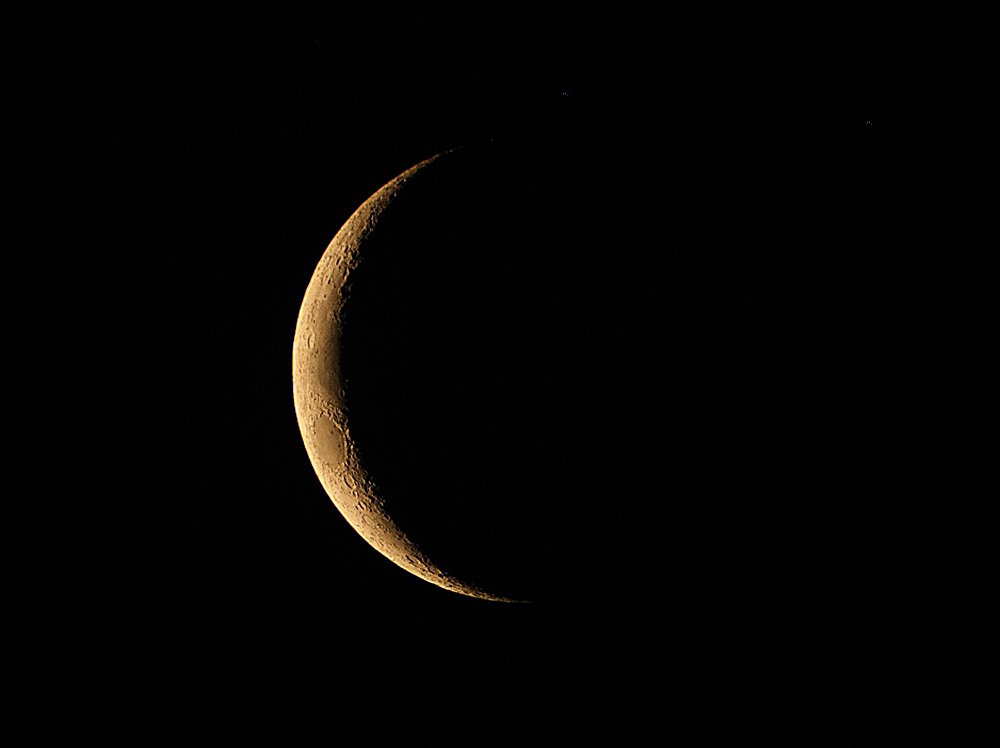

The 3 day old moon. Mare Crisium dominates the view. Above it is Mare Fecunditatis. The prominent crater with the central peak on the eastern edge of Mare Fecunditatis is Langrenus. On the western edge of Mare Crisium is the small, bright crater Proculus. As the sun rises higher, Proculus becomes one of the brightest features on the Moon. The large shadow-filled crater below it is Macrobus. Near the terminator towards the bottom of the picture, the crater Atlas is visible.
